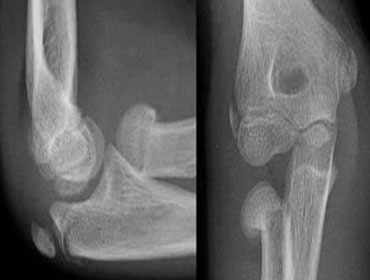Complex Fractures in Radial Head
The most common fracture of the elbow is a radial head fracture.
They account for around a third of all elbow fractures and are most common in people between the ages of 20 and 60. (with a slightly higher frequency in females).
Radial Head Fractures: Classification
The Mason classification is used to classify radial head fractures based on the degree of displacement and intra-articular involvement:
- Mason Type 1 fractures are non-displaced or mildly displaced (less than 2mm).
- Mason Type 2 - A partial articular fracture with a displacement of more than 2 millimetres or angulation.
- Mason Type 3 — Displacement and comminuted fracture (a complete articular fracture)
Management
Prior to deciding on a treatment plan for the fracture, make sure the patient is properly resuscitated and stabilised. Ascertain that enough analgesia is provided.
The severity of the fracture on imaging is normally used to guide treatment, but make careful to look for neurovascular damage and mechanical elbow motion blockage as well (can the patient flex-extend and supinate-pronate)
- Mason type 1 injuries are treated non-operatively using a sling for a short length of time (less than a week) and then early mobilisation.
- Mason Type 2 injuries can be treated as a type 1 injury if there is no mechanical block, but if there is, surgery (usually an open reduction internal fixation (ORIF)) may be required.
- Mason Type 3 injuries almost usually necessitate surgery, either through ORIF or radial head excision or replacement (especially in highly comminuted fractures)
After a radial head fracture, patients can expect a satisfactory prognosis; nevertheless, subsequent osteoarthritic alterations in the articular surfaces may develop later in life.

